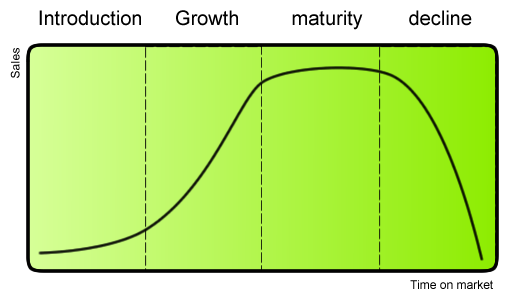I've recently had a lecture where the iPhone was used as an example to explain innovation cycles in economic geography. Sadly, I left my notes somewhere else so I'll paraphrase. So this is the answer from an economic perspective: There are four stages in the Product Life Cycle: - Introduction, where a new market or product is created for a relatively small audience (think first iPhone) - Growth, in which the amount of people adopting the product increases - Maturity, when the growth reaches its limit and the amount of people using the product slowly plateaus - Decline, when the item becomes obsolete or is replaced by a better one (the way smartphones replaced normal mobile phones for instance) A company wants to stay in the growth stage as long as possible. But this is only possible if the growth increases more and more, because as soon as the growth this year is less than previous year, it's coming close to entering the maturity stage, at which its userbase doesn't grow anymore. And to stand still is to regress, especially for investors. To keep growing faster and faster, Apple needs to innovate more and more. But at the same time, they need to make more iPhones every year, to keep the growth going. So as the product life cycle goes on, a company will spend less money into product innovation and more money into process innovation. That way they develop methods to make their product faster, cheaper and with a larger volume every year. Apple has developed special robots, made to make iPhone parts. Economies of scale are dominant here. Standardization of products leads to bigger volumes at a lower price per phone. This is why every new iPhone looks so much like the previous one: they already have the investments in efficient processes, so it's cheaper to use (nearly) the same pieces. A new processor is usually the same shape. But they can't deviate too much, or it will mean large adaptations in the production process, at great costs. If they were to make different iPhones for different price categories, this would require them to use cheaper parts of the same model (iPhone 5c) or make big, costly changes to their highly efficient production process.